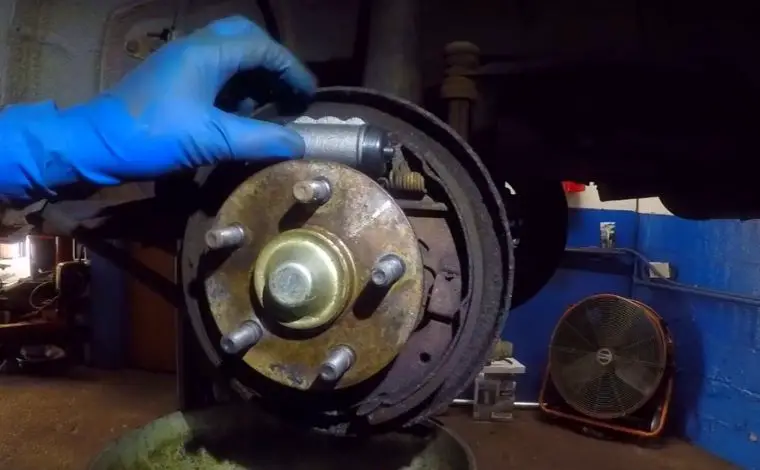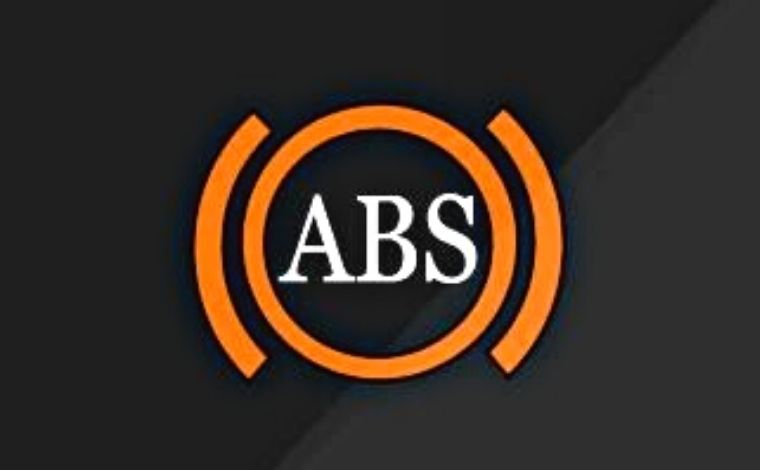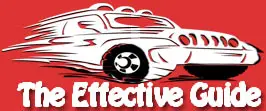Last Updated on April 23, 2025
Hydraulics play a vital role in maintaining control over your vehicle, particularly when it comes to the braking system. A well-functioning hydraulic brake system ensures your safety by helping you stop your car effectively and avoid accidents. However, if any component within the hydraulic system malfunctions, it can compromise your ability to control the vehicle—resulting in serious safety hazards.
The C1214 trouble code points to an issue within the hydraulic control circuit of the ABS (Anti-lock Braking System). When this code is triggered, it typically indicates a fault in the pressure control system that assists in braking. This article will help you understand what the C1214 code means, its possible causes, how to diagnose it correctly, and what you should avoid doing during the process.
Quick Summary of Common Causes
- Faulty ABS Relay
- Open or Damaged Circuit
- Defective ABS Module
- Poor Ground Connection
- Blown Fuse
Quick Fixes for C1214
- Inspect and Replace the ABS Relay
- Check wiring and electrical connectors
- Test or Replace the ABS Module
- Examine and Clean ground connections
- Check and Replace the fuse
Two Common Mistakes While Diagnosing Trouble Codes
Vehicle owners often make crucial mistakes when diagnosing and fixing trouble codes. Understanding these errors can help you avoid confusion and unnecessary costs.
1. Treating Trouble Codes Like a “Fortune Code”
Many car owners assume that reading a trouble code is a definitive diagnosis, much like a “fortune-telling” tool. However, a code is just the starting point. It highlights a symptom—not necessarily the root cause. For instance, the C1214 code might indicate a brake fluid leak, a failed ABS relay, or even poor electrical grounding. So, don’t immediately jump to conclusions or start replacing parts without proper diagnosis.
Tip: Always consult with a certified mechanic or use a professional diagnostic tool for a complete assessment.
2. Blindly Trusting Online Solutions
While it’s tempting to quickly Google a trouble code, relying on generic or unreliable websites can lead to misinformation. Every vehicle make and model can interpret codes differently, and many sources don’t offer vehicle-specific insights.
Tip: Always cross-reference information using your vehicle’s service manual or a reliable, brand-specific scanner. Use trusted sources or forums dedicated to your car’s make.
What Does the C1214 Code Mean?
The C1214 trouble code signals a malfunction in the Hydraulic System Relay Circuit—specifically, in the ABS hydraulic control unit. This component controls how brake pressure is applied during sudden stops or when traction is compromised. If this system fails, your ability to stop the vehicle efficiently is significantly reduced, raising the risk of accidents.
It’s important to resolve the issue promptly to restore full braking performance and prevent further system failures.
In-Depth Causes of the C1214 Code
Now let’s explore the root causes behind the C1214 code and how they impact your vehicle’s braking system.
1. Brake Fluid Leakage
Brake fluid is a critical component in transmitting force from your foot to the braking mechanism. In modern braking systems, this fluid ensures seamless pressure transfer and responsiveness.
However, a leak in the brake fluid system disrupts this process. The lack of fluid causes reduced brake force and may trigger the C1214 code.
Signs of Brake Fluid Leak:
- Spongy or soft brake pedal
- Warning lights on the dashboard
- Visible fluid under the vehicle near the wheels
Fix: Inspect the brake lines, master cylinder, and calipers. If you detect a leak, repair or replace the damaged parts and refill with the manufacturer-recommended brake fluid.
2. Faulty Brake Booster
The brake booster enhances the force applied to the brake pedal, making it easier to stop the car without exerting much pressure. It typically lasts over 150,000 miles, but environmental stress or manufacturing defects can shorten its lifespan.
If the brake booster fails, the vehicle might show symptoms of hard braking, decreased response time, or a hissing noise near the brake pedal.
Impact: A malfunctioning brake booster can create an imbalance in the hydraulic pressure, triggering the C1214 code.
Fix: Perform a vacuum test. If the booster fails to hold pressure, it must be replaced. Also, inspect the master cylinder attached to the booster.
3. Excessive Wear on Brake Rotor Discs
Brake rotors are circular discs that convert kinetic energy into heat, slowing down the vehicle. Over time, these rotors can wear out, develop grooves, or warp due to heat and pressure.
When rotors are severely worn or damaged, the braking system’s hydraulic response is compromised, potentially leading to a C1214 code.
Fix: Replace or resurface the rotors. Ensure your brake pads are also in good condition and match the rotor type.
4. Sudden Braking at High Speeds
Hard braking at excessive speeds can cause abrupt stress on the braking system. This behavior not only increases the chances of fluid leaks but also wears out essential components like pads and rotors.
Impact: Repeated sudden braking leads to overheating, boiling brake fluid, and hydraulic imbalance—perfect conditions for the C1214 to appear.
Fix: Practice controlled, gradual braking—especially during high-speed driving. Replace damaged parts if overheating has already occurred.
What Are the Possible Symptoms of the OBD-II Code C1214?
When your vehicle encounters a malfunction within the Anti-lock Braking System (ABS) or the electronic hydraulic control module, it may trigger the C1214 code. This code typically indicates a hydraulic brake system malfunction, which may severely affect the vehicle’s braking ability. Recognizing the early symptoms associated with the C1214 code is crucial for both vehicle safety and timely repairs.
Here are the most common symptoms of a C1214 code:
1. ABS Warning Light Illuminated
One of the most noticeable symptoms of the C1214 code is the ABS light turning on in your dashboard. This light is a built-in alert system that notifies the driver of potential issues in the ABS or chassis systems. Even if the car appears to function normally at first, the illuminated ABS light should not be ignored. It indicates the system has detected a fault—likely linked to the hydraulic modulator or low brake fluid levels.
2. Check Engine Light On
In some vehicles, especially modern models with integrated system alerts, the Check Engine Light (CEL) may also activate alongside the ABS warning. This happens when the issue extends beyond just ABS to affect overall engine performance, signaling broader trouble within the braking or stability system. It also suggests that the chassis control module may be involved, which is consistent with the C1214 diagnostic code.
3. Reduced Braking Performance
A more dangerous symptom is a noticeable decline in braking efficiency. If the vehicle takes longer to stop or the brake pedal feels soft or spongy, it could indicate hydraulic failure. This could be due to low brake fluid, a faulty ABS pump, or leaks in the hydraulic lines.
4. Brake Fluid Leaks or Low Fluid Warning
Since C1214 is related to hydraulic pressure, low brake fluid or visible leaks near the wheels or under the hood may signal the issue. Brake fluid is essential for maintaining proper brake pressure, and its loss directly impacts braking power.
5. ABS Not Engaging Properly
When this error is present, the ABS system may fail to engage during hard braking or slippery road conditions. This is a critical safety concern as ABS is designed to prevent wheel lock-up and maintain vehicle control during emergency braking.
6. Noise or Vibration While Braking
In some cases, you may notice unusual noises, such as grinding or clicking, or feel vibrations through the brake pedal. These symptoms can arise from irregular hydraulic pressure or air in the brake lines—common side effects of ABS malfunctions.
How Can I Fix the C1214 Trouble Code?
Fixing the C1214 code involves a thorough diagnostic approach and professional-grade repair methods. Since this code deals with your hydraulic braking system, it’s crucial to handle the repair with caution to avoid compromising your safety.
Step-by-Step Fix for C1214 Code:
1. Perform a Complete Diagnostic Scan
Use a reliable OBD-II scanner to confirm the C1214 code and check for any related codes like C1221, C1225, or C1232. These may indicate additional problems in the ABS or traction control system. Some advanced scan tools can also monitor live data and sensor status, which helps pinpoint the malfunctioning component.
2. Inspect the Brake Fluid Level
Check if your vehicle’s brake fluid reservoir is full and the fluid is clean. If it’s low, refill it with the manufacturer-recommended fluid type and inspect the entire system for leaks.
3. Look for Brake Fluid Leaks
Carefully examine brake lines, ABS module, calipers, and wheel cylinders for any signs of leakage. If any leaks are found, they must be sealed or the components replaced.
4. Inspect the ABS Hydraulic Control Module
The C1214 code often originates from a faulty ABS hydraulic control module. If this module fails, it might need replacement. However, ensure that the connectors and wiring harnesses are not loose or corroded before deciding on a replacement.
5. Bleed the Brakes
If air has entered the hydraulic system, you’ll need to bleed the brakes to remove the air bubbles. This step restores the firmness of the brake pedal and allows accurate hydraulic pressure.
6. Replace the Faulty Components
If diagnostics indicate a failed ABS pump, control module, or pressure sensor, you must replace the component. Always use OEM (Original Equipment Manufacturer) parts to maintain compatibility and performance.
7. Clear the Code and Test Drive
Once the issue is resolved, clear the code using the OBD-II scanner and take the vehicle for a test drive. Ensure the ABS warning light does not reappear and confirm the brake system functions normally under various driving conditions.
⚠️ Note: Repairing a hydraulic system is a high-risk task. If you’re not experienced, it’s best to seek help from a certified mechanic or dealership service center.
Final Thoughts
A healthy braking system is essential not only for a comfortable driving experience but also for road safety. The C1214 OBD-II code is a serious indicator that your ABS hydraulic control may be compromised. Ignoring it could lead to brake failure, loss of control, or even accidents.
Regular vehicle maintenance—especially brake fluid inspections and ABS module checks—can help prevent these issues. If your scanner displays a C1214 code, act promptly. Timely diagnostics, professional repair, and proper fluid management will save you from more costly breakdowns and ensure your vehicle remains in top condition.
Additional Trouble Codes to Explore
To better understand your vehicle’s error signals, here are a few related trouble codes you may want to explore:
- C1233 Code: Rear Wheel Speed Sensor Right Input Signal Missing
- C1232 Code: Left Rear Wheel Speed Sensor Circuit Fault
- C1226 Code: Right Front Excessive Wheel Speed Variation
For a complete overview of OBD-II codes and their meanings, check out our guide on Car Diagnostic Codes.
Kevin Nicholas is an automotive technician who is a genius at software and hardware-related issues. He manually tested more than a hundred OBD scanners and gave his honest opinion on whether the device was worth the money or not. His in-depth OBD review articles help people choose the right product, whether it is a European, American, or Asian vehicle. He completed his Automotive Specialized Training Course at Universal Technical Institute and has more than 15 years of experience in the field.
